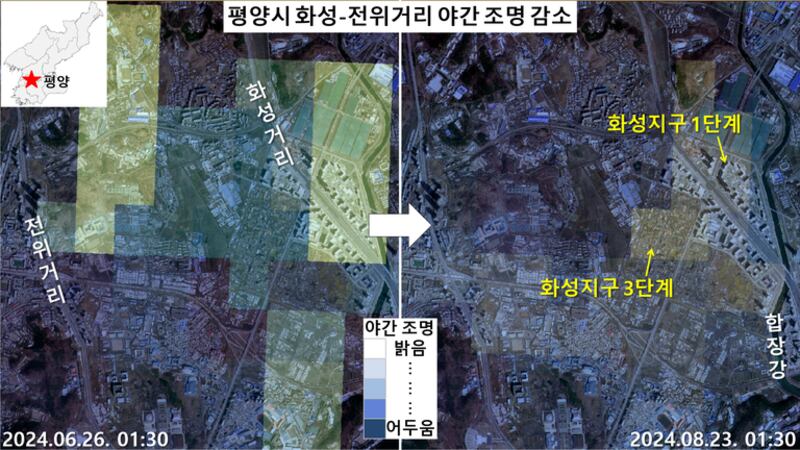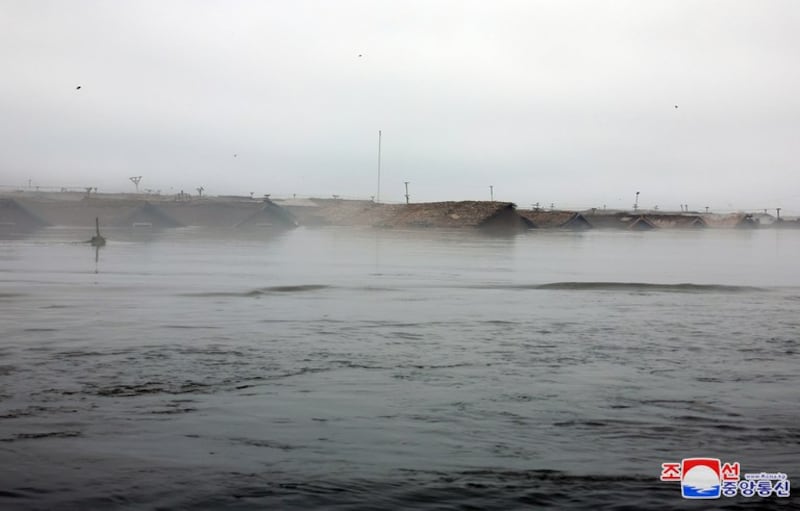[ Read a version of this story in KoreanOpens in new window ]
North Korean nights look darker than usual these days, satellite imagery revealed, leading experts to conclude that damage from floods in July may have damaged the country’s archaic power grid.
The Joint Polar-orbiting Satellite System, a satellite jointly operated by NASA and the National Oceanic and Atmospheric Administration, or NOAA, on Aug. 23 photographed the area around the North Korean city of Sinuiju, which lies across the Yalu River from the Chinese city of Dandong.
When compared to a satellite photo taken June 26 of the same area, the North Korean side appears to be much darker, with very little change in brightness on the Chinese side.
Bruce Songhak Chung, a researcher at the Korean Institute for Security and Strategy, who analyzed the nighttime lighting footage, told RFA Korean on Aug. 28 that the reason the Sinuiju area has become dark could be damaged power lines and facilities from the flood.

“It appears that during the heavy rains, power lines were damaged due to the loss of or damage to telephone poles and wires, including the nighttime barbed wire fences installed along the Yalu River,” he said.
“So I think they are experiencing a power shortage because the power is not being supplied properly,” Chung said.
The high-voltage electric fences along the Yalu River that were under construction are meant to prevent North Korean residents from escaping.
Jacob Bogle, a private satellite imagery analyst, told RFA that although the two hydroelectric dams that supply Sinuiju with power are not known to have been damaged, he believes some of the transmission lines and electrical substations were.
“It's possible that the dams, which are operated jointly with China, underwent inspections, with turbines being temporarily shut down one by one leading to less electricity generation,” he said.
Pockets of darkness in Pyongyang
The darkness was not only limited to the Sinuiju area. The Hwasong area of Pyongyang, site of a major housing construction project, was also dark.

JPSS satellite images taken on June 26 and Aug. 26 show that the bright lights that illuminated the area for nighttime workers were noticeably darker.
“We may presume that the power situation in Pyongyang may have suddenly worsened recently, or perhaps that construction workers may have been mobilized for flood recovery in Sinuiju,” said Chung.
Jiro Ishimaru, the founder and chief editor of the Osaka-based Asia Press news outlet that specializes in North Korea, told RFA that authorities are making an all-out flood recovery effort.
“Even in areas where flood damage is not as severe, each company is organizing stormtroopers and sending them to the flood sites,” he said, using the term by which North Korea calls its soldiers assigned to construction work.
Translated by Claire S. Lee. Edited by Eugene Whong and Malcolm Foster.
